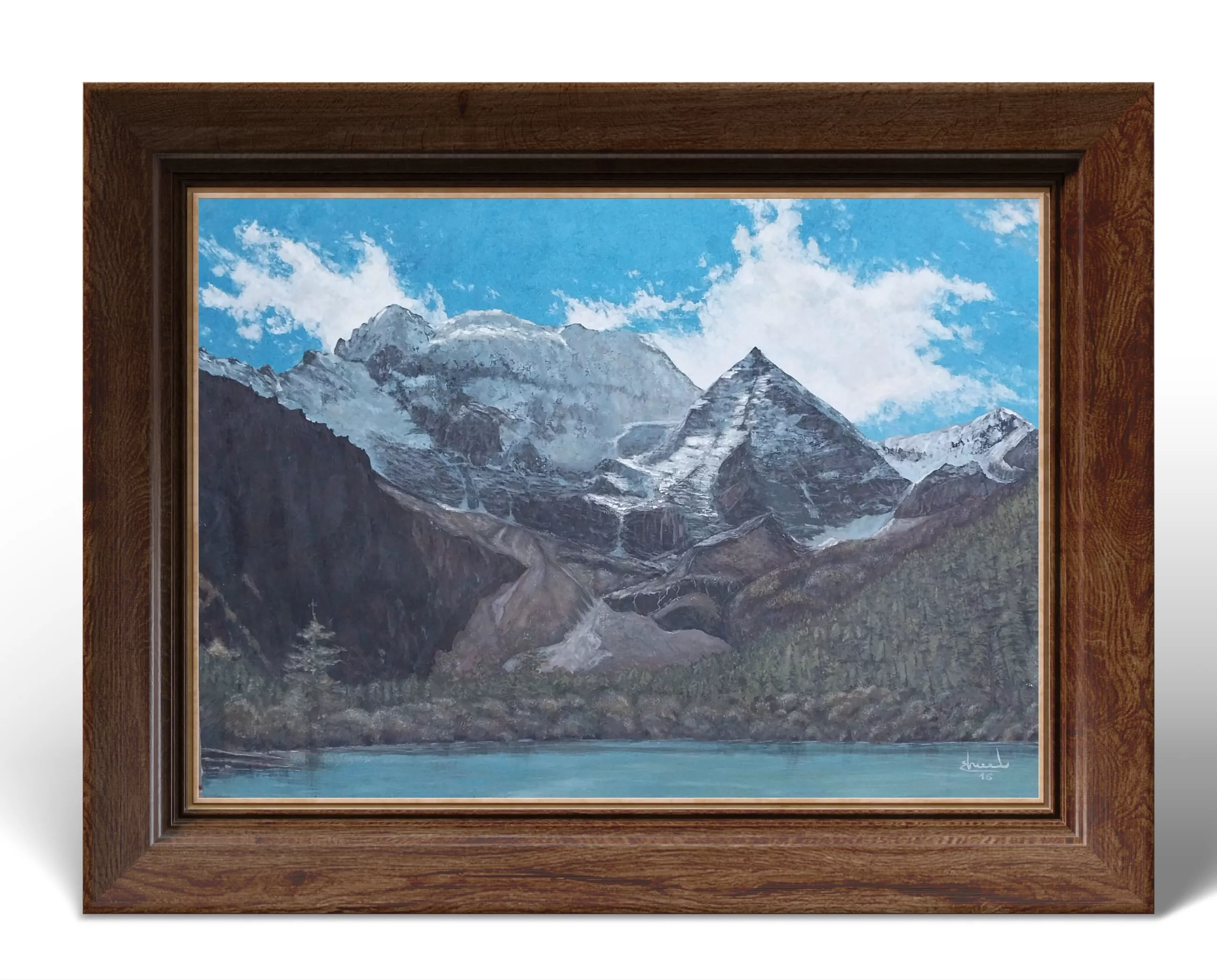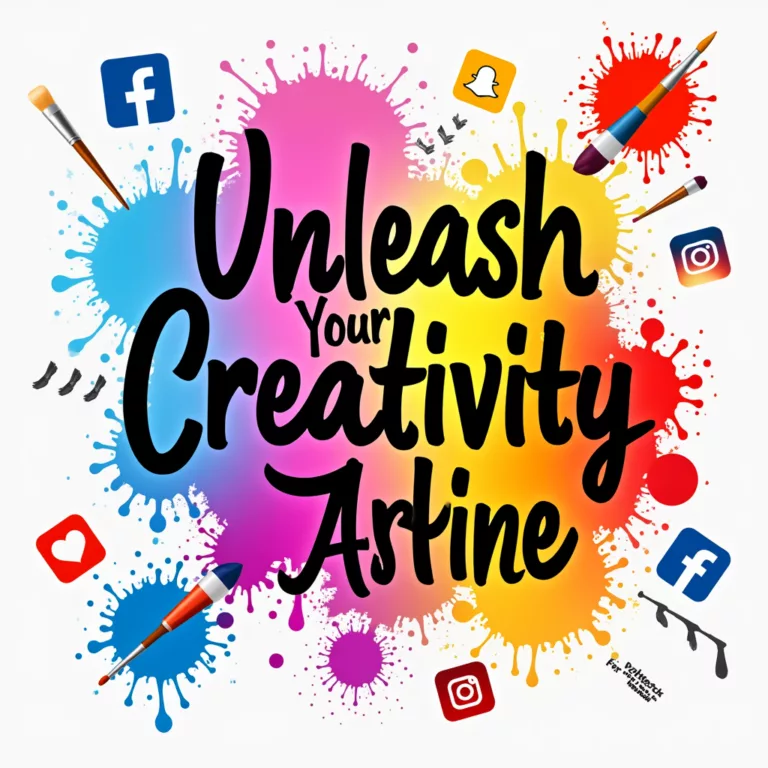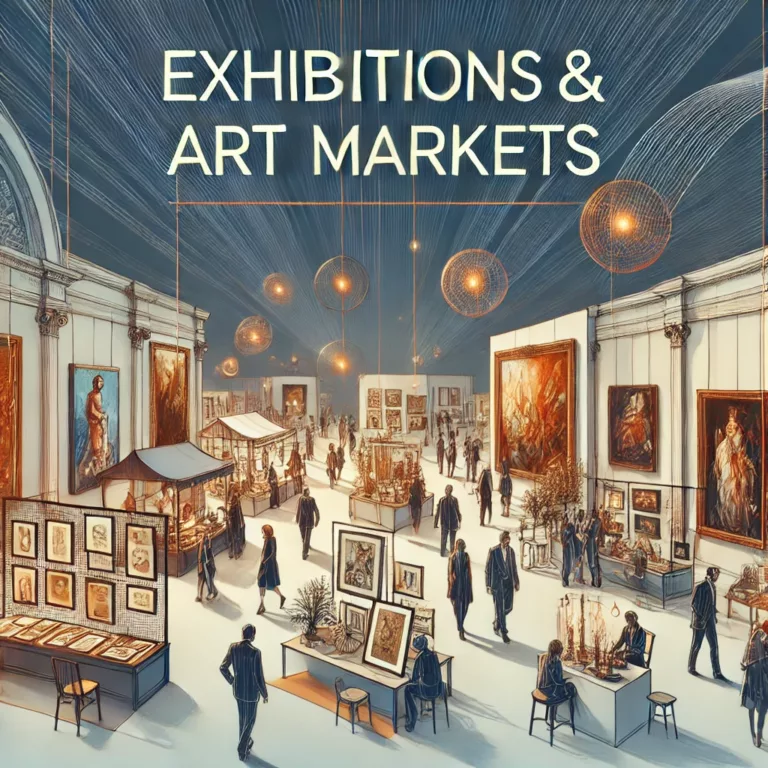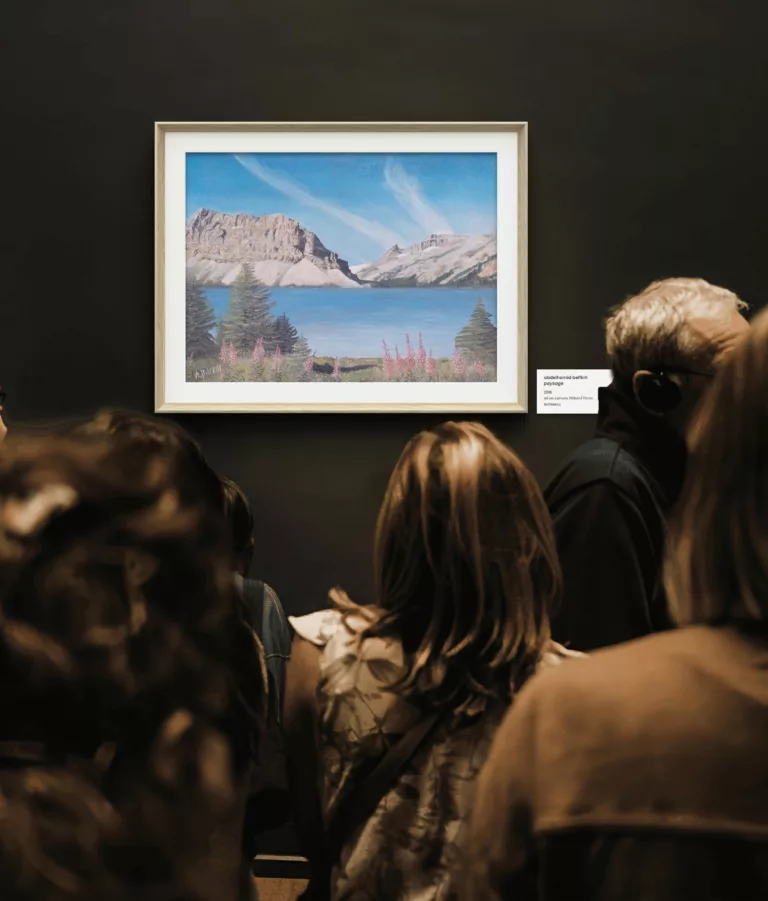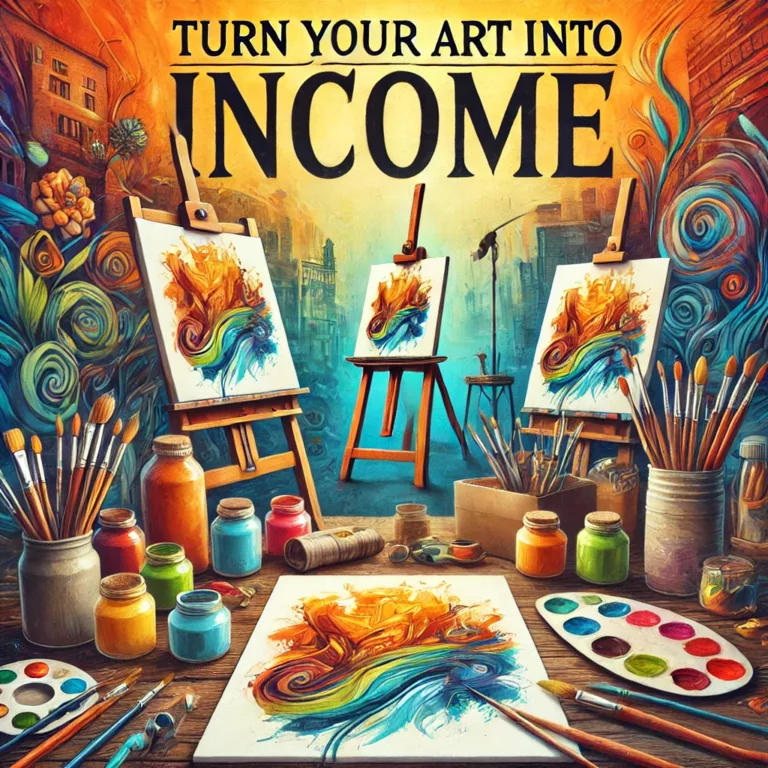Best Platforms to Sell Art Online
Artists have unprecedented opportunities to showcase and sell their work to a global audience. Gone are the days when artists were limited to local galleries or physical art fairs. The internet has democratized art sales, allowing creators of all backgrounds to find their market and build sustainable careers. This comprehensive guide will explore the best online platforms for selling art, examining their unique features, fee structures, audience demographics, and optimization strategies.
Understanding the Online Art Marketplace
Before diving into specific platforms, it’s important to understand the broader landscape of online art sales:
- Global reach: Online platforms connect artists with buyers worldwide
- Diverse price points: From affordable prints to high-value original pieces
- Various mediums: Digital art, paintings, sculptures, photography, and mixed media
- Different business models: Marketplace commissions, subscription fees, or direct sales
Selecting the right platform depends on your specific art style, career goals, and target audience. Let’s explore the top options available to artists today.
Fine Art Marketplaces
1. Saatchi Art
Saatchi Art has established itself as one of the premier online galleries for contemporary art, with a reputation for quality and curation.
Key Features:
- Global audience with over 1.3 million active buyers
- Curator program that highlights promising artists
- “New This Week” collections for fresh exposure
- Annual “Invest in Art” reports featuring emerging artists
Commission Structure:
- 35% commission on sales (artists keep 65%)
- Free to list artwork
- Artists set their own prices
- Handles shipping logistics and customer service
Best For:
- Contemporary fine artists
- Painters and sculptors
- Mid-career artists with established pricing
- Artists looking for gallery-level representation
Success Tips:
- Complete your profile thoroughly with artist statement and biography
- Upload high-quality, well-lit photographs
- Participate in Saatchi Art competitions and open calls
- Engage with curator feedback and recommendations
2. Artfinder
Artfinder focuses on connecting independent artists with art lovers and emphasizes the unique stories behind each piece.
Key Features:
- Curated marketplace requiring application approval
- “Affordability pledge” highlighting pieces under $500
- Emphasis on sustainable and ethical practices
- Artist-friendly discovery algorithms
Commission Structure:
- 33-40% commission depending on artist level
- Free to join but requires application
- Tiered artist program with increasing benefits
- Handles VAT and customs for international orders
Best For:
- Mid-level artists with a unique style
- Artists with strong storytelling behind their work
- Creators who prioritize ethical and sustainable practices
- Those looking for a more curated marketplace
Success Tips:
- Emphasize your unique artistic process and story
- Tag works thoroughly with relevant keywords
- Maintain consistent pricing across platforms
- Respond promptly to customer inquiries
3. Singulart
Singulart has quickly risen to prominence as a platform connecting serious collectors with emerging and established artists.
Key Features:
- Highly selective, invitation-only platform
- Focus on high-end art and serious collectors
- Personal art advisors for buyers
- Strong presence in European markets
Commission Structure:
- 40-50% commission based on artist level
- Invitation-only platform
- Premium presentation and marketing support
- Handles international shipping and customs
Best For:
- Established artists with gallery experience
- Creators of higher-priced original works
- Artists looking for European market exposure
- Those seeking a more exclusive platform
Success Tips:
- Maintain a consistent body of work
- Provide detailed provenance and authenticity information
- Develop strong artist statement and professional biography
- Participate in Singulart’s online exhibitions and features
Popular Marketplaces
4. Etsy
While not exclusively an art platform, Etsy has become a popular destination for affordable and accessible art.
Key Features:
- Massive built-in audience of over 90 million active buyers
- SEO-friendly listings that appear in Google searches
- Customizable shop with branding options
- Integration with social media platforms
Commission Structure:
- $0.20 listing fee per item (listings active for 4 months)
- 6.5% transaction fee on sales
- 3% + $0.25 payment processing fee
- Additional fees for Etsy Ads if used
Best For:
- Artists selling affordable prints and reproductions
- Illustrators and graphic designers
- Artists with production capabilities for multiple pieces
- Those creating art with commercial appeal
Success Tips:
- Use all available photo slots with lifestyle images
- Implement strong SEO practices in titles and descriptions
- Create policies for shipping, returns, and custom orders
- Respond quickly to customer messages
5. Society6
Society6 specializes in putting artists’ designs on a wide range of products, from prints to home decor and apparel.
Key Features:
- Print-on-demand model with no upfront costs
- Extensive product catalog for art application
- Built-in global production and shipping
- Artist-set pricing for art prints
Commission Structure:
- Artists earn 10% on most products
- For art prints, artists can set their own markup
- No listing fees or monthly costs
- Handles all production, shipping, and customer service
Best For:
- Digital artists and illustrators
- Designers with patterns or repeatable motifs
- Artists looking to diversify product offerings
- Creators with social media followings
Success Tips:
- Upload high-resolution, adaptable designs
- Test your art on various products to ensure quality
- Promote your shop through social media
- Create collections around themes or color schemes
6. Redbubble
Similar to Society6, Redbubble allows artists to sell their designs on a variety of products without handling production.
Key Features:
- Over 70 different products available for customization
- Artist-set pricing and margins
- Strong search functionality for discovery
- Active community of independent artists
Commission Structure:
- Base price set by Redbubble for manufacturing
- Artists add their own markup (typically 10-30%)
- No upload or listing fees
- Handles production, shipping, and returns
Best For:
- Illustrators and graphic designers
- Artists with pop culture or trend-focused work
- Creators looking for passive income
- Those with distinctive, adaptable style
Success Tips:
- Add relevant tags and keywords to improve searchability
- Use all available product mockups in listings
- Join Redbubble groups for additional exposure
- Analyze top-selling products and adjust offerings
Direct Sales Platforms
7. Shopify
For artists ready to build their own independent online store, Shopify offers powerful e-commerce tools.
Key Features:
- Fully customizable online store builder
- Integrated payment processing
- Inventory and order management
- Marketing tools and analytics
Commission Structure:
- Monthly subscription fee ($29-$299 based on plan)
- Payment processing fees (2.4-2.9% + $0.30 per transaction)
- No commission on sales
- Additional costs for premium themes and apps
Best For:
- Established artists with existing following
- Those looking for complete brand control
- Artists selling high-volume or high-value works
- Creators wanting to build direct customer relationships
Success Tips:
- Invest in professional website design
- Build email marketing list for direct communication
- Implement SEO best practices
- Integrate with social media platforms
8. Big Cartel
Big Cartel is specifically designed for artists and makers, offering a simpler alternative to Shopify.
Key Features:
- Artist-focused platform with simpler interface
- Free plan available for up to 5 products
- Built-in tools for discounts and promotions
- Customizable store themes
Commission Structure:
- Monthly subscription fee ($9.99-$19.99 based on plan)
- Free plan available with limited features
- No transaction fees (payment processor fees apply)
- No commission on sales
Best For:
- Artists just starting out with online sales
- Those with limited inventory (under 50 products)
- Creators looking for simplicity
- Artists with tight budgets
Success Tips:
- Choose a mobile-friendly theme
- Set up Google Analytics to track visitor behavior
- Utilize the blog feature for content marketing
- Create clear shipping and return policies
Social Media Platforms
9. Instagram
While not traditionally an e-commerce platform, Instagram has become essential for art sales through its shopping features.
Key Features:
- Integrated shopping tags and checkout
- Access to over 1 billion monthly active users
- Strong visual focus ideal for art presentation
- Opportunity to build personal connection with followers
Commission Structure:
- No listing fees or commissions
- Payment processor fees for Instagram Checkout (5%)
- Requires business account and connected Facebook shop
- Costs associated with ads if used for promotion
Best For:
- Artists with strong visual content
- Those who enjoy personal engagement with followers
- Creators with process-based or visually striking work
- Artists building a personal brand
Success Tips:
- Post consistently and at optimal times
- Use strategic hashtags (mix of popular and niche)
- Share process videos and behind-the-scenes content
- Create a cohesive visual grid that showcases your style
10. Facebook Marketplace
Facebook Marketplace offers a way to reach local buyers and connect with communities interested in art.
Key Features:
- Local and regional targeting
- Integration with Facebook Business pages
- Ability to list shipping or pickup options
- Built-in messaging system
Commission Structure:
- No listing fees
- 5% transaction fee for shipped items
- No fees for local pickup
- Advertising costs if using boosted listings
Best For:
- Artists selling larger pieces not suitable for shipping
- Those focusing on local markets
- Creators with lower-priced accessible art
- Artists with strong community connections
Success Tips:
- Take multiple high-quality photos of each piece
- Provide detailed dimensions and material information
- Respond quickly to inquiries
- Cross-post between Marketplace and your artist page
NFT Platforms
11. OpenSea
As the largest NFT marketplace, OpenSea has become a destination for digital artists entering the crypto art space.
Key Features:
- Supports multiple blockchains (Ethereum, Polygon, Solana)
- Allows creation of collections and series
- Secondary market sales with royalties
- Minting tools for non-technical artists
Commission Structure:
- 2.5% transaction fee on sales
- Gas fees for minting (varies by blockchain)
- Artist-set royalties on secondary sales (typically 5-10%)
- Free to create account and list items
Best For:
- Digital artists entering the NFT space
- Artists with animation or motion graphics skills
- Creators interested in blockchain technology
- Those looking to tap into crypto collector markets
Success Tips:
- Create a cohesive collection with a distinctive theme
- Engage with the NFT community on Twitter and Discord
- Consider starting with Polygon for lower gas fees
- Provide utility or additional value with your NFTs
12. Foundation
Foundation has positioned itself as a curated NFT platform focusing on high-quality digital art.
Key Features:
- Invitation-only platform for creators
- Auction-based sales model
- Focus on single edition or limited series works
- Community-driven curation
Commission Structure:
- 15% commission on primary sales
- 10% commission on secondary market sales
- Artist-set royalties (typically 10-20%)
- Ethereum gas fees for minting and transactions
Best For:
- Established digital artists
- Creators with unique digital expressions
- Artists with existing communities
- Those creating conceptual or fine art NFTs
Success Tips:
- Create a compelling artist profile and story
- Produce high-quality artist statements for each work
- Engage with the Foundation community
- Build anticipation through social media before drops
Specialized Art Platforms
13. ArtStation
Key Features:
- Industry-focused community for digital artists
- Portfolio and marketplace integration
- Learning resources and job opportunities
- Annual challenges with significant exposure
ArtStation serves as both portfolio platform and marketplace particularly suited for concept artists and illustrators.
Commission Structure:
- 20% commission on standard sales
- Lower fees for Pro members (12%)
- Print-on-demand service available
- Subscription fee for Pro membership ($9.95/month)
Best For:
- Concept artists and illustrators
- 3D artists and modelers
- Game and entertainment industry professionals
- Digital artists building professional portfolios
Success Tips:
- Participate in ArtStation challenges
- Tag works with appropriate software and techniques
- Follow industry professionals and companies
- Share work-in-progress and process videos
14. Fine Art America
Fine Art America focuses on print-on-demand services for artists, with emphasis on high-quality reproduction.
Key Features:
- Extensive product catalog for art prints
- Global production and shipping network
- Ability to set different markups for different products
- Integration with personal websites
Commission Structure:
- Artists set their own markups above base prices
- No listing fees or monthly costs
- Premium membership available ($30/year)
- Handles all production and customer service
Best For:
- Photographers and digital artists
- Painters wanting quality reproductions
- Artists with commercially appealing work
- Those seeking passive income from art
Success Tips:
- Upload highest resolution images possible
- Create collections based on themes or styles
- Participate in contests and featured collections
- Use groups and forums for additional exposure
15. UGallery
UGallery operates as an online curated gallery representing selected artists with a focus on original works.
Key Features:
- Highly selective juried platform
- Gallery-like presentation of artwork
- 7-day return policy for buyers
- Dedicated artist pages with biography
Commission Structure:
- 50% commission on sales
- Application required for representation
- No monthly fees or listing costs
- Handles marketing and customer acquisition
Best For:
- Creators of original one-of-a-kind works
- Traditional painters and sculptors
- Artists with gallery-level pricing
- Those seeking curatorial representation
Success Tips:
- Submit your strongest, most cohesive body of work
- Provide professional-quality photographs
- Develop a compelling artist statement
- Maintain consistent pricing across platforms
Emerging Platforms to Watch
16. Artmajeur
With over 10 million monthly visitors, Artmajeur is gaining traction as a global art marketplace.
Key Features:
- Multiple membership tiers including free option
- Virtual gallery presentation
- Integrated art management tools
- Strong European market presence
Commission Structure:
- 0-9% commission depending on membership level
- Monthly subscription fee for premium tiers
- Multiple currency support
- Artists handle shipping and fulfillment
Best For:
- Artists testing multiple platforms
- Those looking for European exposure
- Creators with diverse portfolio of works
- Artists comfortable handling shipping logistics
Success Tips:
- Maintain complete and detailed listings
- Utilize the virtual gallery feature
- Engage with the community through comments
- Take advantage of promotional opportunities
17. Artfol
A newer social media platform specifically designed for artists, Artfol combines community features with sales capabilities.
Key Features:
- Art-focused social platform with sales features
- Algorithm that prioritizes art content
- Community challenges and events
- Portfolio-style presentation
Commission Structure:
- Currently fee-free during growth phase
- In-app purchase options for premium features
- Direct sales through external links
- No commission on sales
Best For:
- Emerging artists building audience
- Creators interested in networking
- Those looking for feedback and community
- Artists comfortable with mobile-first platforms
Success Tips:
- Post consistently and engage with other artists
- Participate in community challenges
- Utilize appropriate tags for discovery
- Share process videos and time-lapses
Strategies for Success Across Platforms
Regardless of which platform you choose, certain strategies can help maximize your success:
1. Quality Photography
The importance of high-quality product photography cannot be overstated:
- Use natural lighting or proper studio lighting
- Capture details, texture, and scale
- Include lifestyle images showing the art in context
- Maintain consistent style across all images
2. Optimized Listings
Make your art discoverable through strategic descriptions:
- Research relevant keywords and incorporate them naturally
- Write unique, detailed descriptions for each piece
- Include information about techniques and materials
- Tell the story behind the creation of the artwork
3. Consistent Branding
Develop a recognizable style across all platforms:
- Use the same profile picture and banner images
- Maintain consistent artist bio and statement
- Develop a signature visual style
- Create cohesive collections or series
4. Strategic Pricing
Set prices that reflect your market position:
- Research comparable artists and their pricing
- Factor in platform fees and commissions
- Consider offering works at various price points
- Maintain consistency across platforms
5. Promotion and Marketing
Don’t rely solely on platform traffic:
- Build an email list of collectors and interested buyers
- Utilize social media to drive traffic to your listings
- Consider paid advertising on platforms where your audience is active
- Collaborate with other artists for cross-promotion
6. Customer Service
Provide exceptional experience for buyers:
- Respond promptly to inquiries
- Offer secure, professional packaging
- Include thank-you notes or certificates of authenticity
- Follow up after purchases for feedback
7. Data Analysis
Track performance to optimize your strategy:
- Monitor which pieces get the most views
- Analyze conversion rates from views to sales
- Identify top-performing keywords and categories
- Adjust your offerings based on sales data
Multi-Platform Strategy
For maximum exposure and sales opportunities, consider a multi-platform approach:
1. Core Platform
Choose one primary platform that best suits your art style and target audience.
2. Secondary Platforms
Select 2-3 complementary platforms that reach different buyer segments.
3. Social Media Presence
Maintain active profiles on Instagram, Pinterest, and other visual platforms.
4. Personal Website
Develop a professional website that serves as your online portfolio and central hub.
5. Newsletter
Build an email list to maintain direct communication with collectors.
Legal and Business Considerations
As you expand your online art business, keep these important factors in mind:
1. Copyright Protection
- Register important works with copyright office
- Use watermarks on preview images
- Understand licensing agreements for each platform
- Know your rights for infringement cases
2. Tax Obligations
- Keep detailed records of sales and expenses
- Understand sales tax requirements for your jurisdiction
- Track international sales for VAT or customs implications
- Consider consulting with a tax professional
3. Shipping and Insurance
- Research secure packaging methods for artwork
- Offer appropriate shipping options based on value
- Consider insurance for high-value pieces
- Understand international shipping regulations
4. Business Structure
- Decide between sole proprietorship, LLC, or other business entity
- Open a separate business bank account
- Consider business insurance for liability protection
- Develop terms and conditions for sales
Conclusion
The online art marketplace offers unprecedented opportunities for artists to reach global audiences and build sustainable careers. By strategically selecting the right platforms for your unique style and business goals, you can maximize your visibility and sales potential.
Remember that success in online art sales rarely happens overnight. Be patient, consistent, and willing to adapt your strategy based on results. Focus on creating your best work while implementing these platform-specific strategies to connect with the right collectors and build your reputation in the digital art world.
Most importantly, stay true to your artistic vision while embracing the business aspects of your creative career. The most successful artists online are those who balance authentic creative expression with strategic marketing and professional business practices.
What platforms have you found success with? Share your experiences in the comments below!
This comprehensive guide is designed to help artists navigate the complex world of online art sales.
Art11deco

